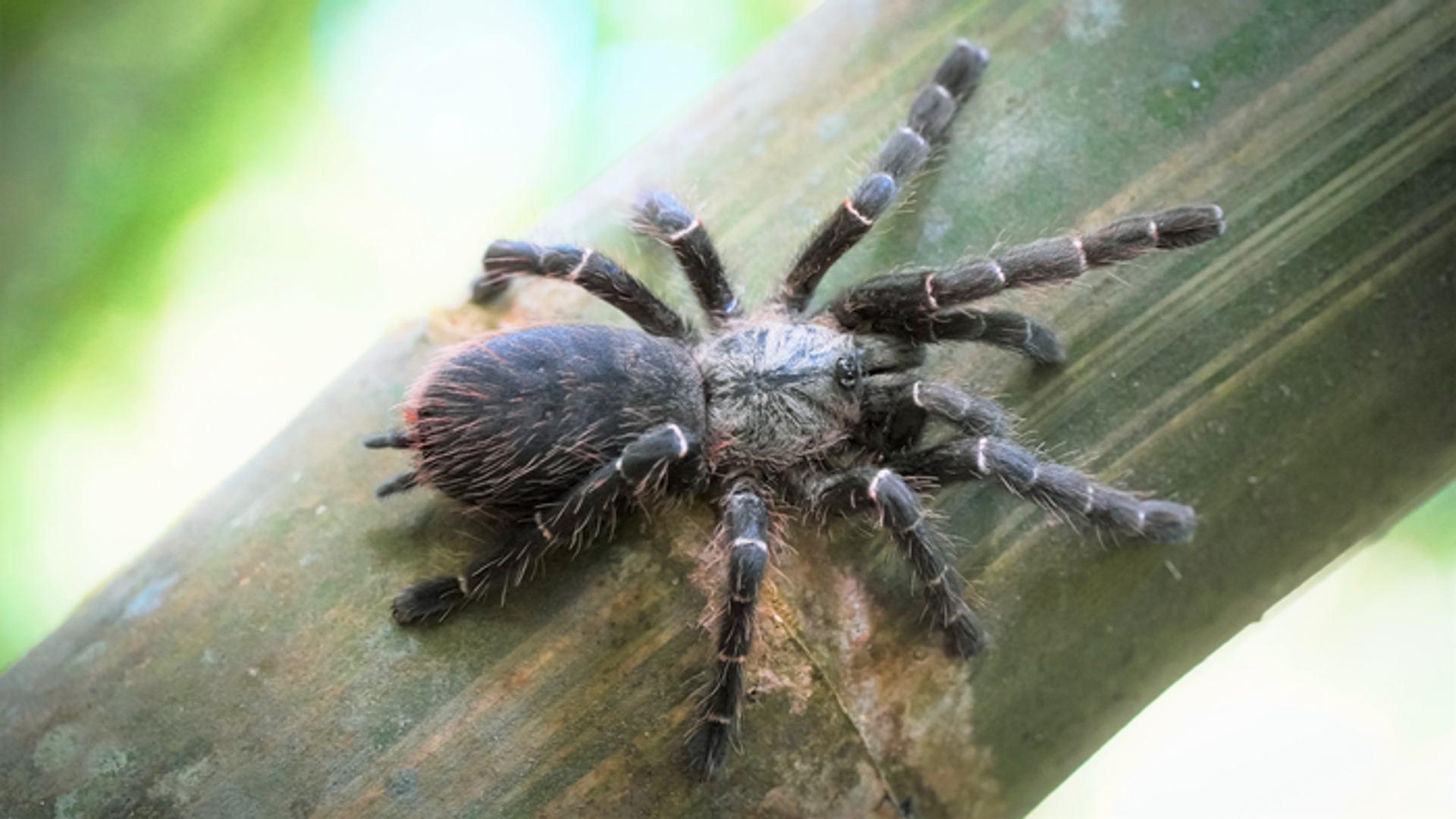https://sputnikglobe.com/20220124/rare-species-of-tarantula-living-in-bamboo-discovered-thanks-to-youtuber-1092488488.html
Rare Species of Tarantula Living in Bamboo Discovered Thanks to Youtuber
Rare Species of Tarantula Living in Bamboo Discovered Thanks to Youtuber
Sputnik International
One may think YouTube has no purpose but to help idlers put off chores they're meant to be doing by watching videos of kittens chasing their shadows and dogs... 24.01.2022, Sputnik International
2022-01-24T17:58+0000
2022-01-24T17:58+0000
2022-08-06T13:32+0000
science & tech
youtube
spider
tarantula
https://cdn1.img.sputnikglobe.com/img/07e6/01/18/1092488380_0:2:700:396_1920x0_80_0_0_db62a6516e3a4e7807b65ebe06b8ba20.png
A famous wildlife YouTuber from Thailand, JoCho Sippawat, has helped to discover a new species of tarantula - the first kind of this spider to live exclusively in the hollow stems of bamboo stalks. The species has been named taksinus bambus, in honour of the Thai king Taksin the Great, and the spider's habitat. The YouTuber, who has 2.5 million followers and was the first to discover the species in Mae Hong Son province in north-western Thailand, was out and about near his home in the village of Mae Tho when he made his discovery.He got in touch with Dr Narin Chomphuphuang of Khon Kaen University, and Chaowalit Songsangchote of Kasetsart University who then studied the new tarantula and described it.According to the scientists, a lot of Thailand's wildlife remains undocumented.Who knows - maybe this could be one for your average YouTube idler.
Sputnik International
feedback@sputniknews.com
+74956456601
MIA „Rossiya Segodnya“
2022
News
en_EN
Sputnik International
feedback@sputniknews.com
+74956456601
MIA „Rossiya Segodnya“
Sputnik International
feedback@sputniknews.com
+74956456601
MIA „Rossiya Segodnya“
science & tech, youtube, spider, tarantula
science & tech, youtube, spider, tarantula
Rare Species of Tarantula Living in Bamboo Discovered Thanks to Youtuber
17:58 GMT 24.01.2022 (Updated: 13:32 GMT 06.08.2022) One may think YouTube has no purpose but to help idlers put off chores they're meant to be doing by watching videos of kittens chasing their shadows and dogs singing along to Adele, but there is apparently more to the popular video hosting site than at first meets the eye.
A famous wildlife YouTuber from Thailand,
JoCho Sippawat, has helped to discover a new species of tarantula - the first kind of this spider to live exclusively in the hollow stems of bamboo stalks.
The species has been named taksinus bambus, in honour of the Thai king Taksin the Great, and the spider's habitat.
The YouTuber, who has 2.5 million followers and was the first to discover the species in Mae Hong Son province in north-western Thailand, was out and about near his home in the village of Mae Tho when he made his discovery.
He got in touch with Dr Narin Chomphuphuang of Khon Kaen University, and Chaowalit Songsangchote of Kasetsart University who then studied the new tarantula and described it.
“These animals are truly remarkable; they are the first known tarantulas with a bamboo-based ecology,” Dr Chomphuphuang said. "Bamboo is important to this tarantula, not only for lifestyle but also because it can only be found in high hill forests in the northern part of Thailand, at an elevation of about 1,000 metres. It is not an exaggeration to say that they are now Thailand's rarest tarantulas."
According to the scientists, a lot of Thailand's wildlife remains undocumented.
"We are primarily on a mission to research and save the biodiversity and wildlife within these forests from extinction, especially species-specific microhabitats,” Dr Chomphuphuang added.
Who knows - maybe this could be one for your average YouTube idler.

